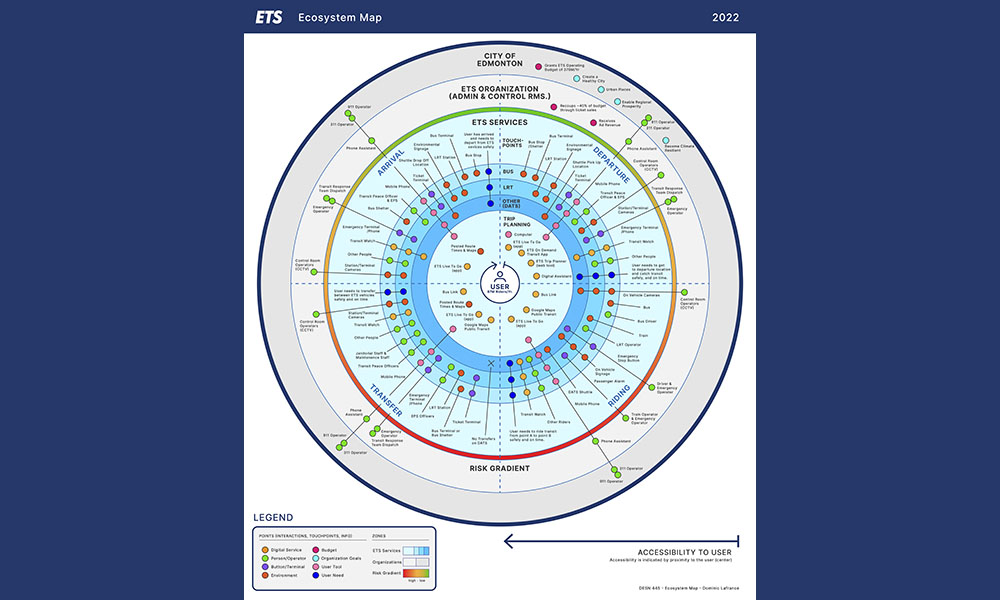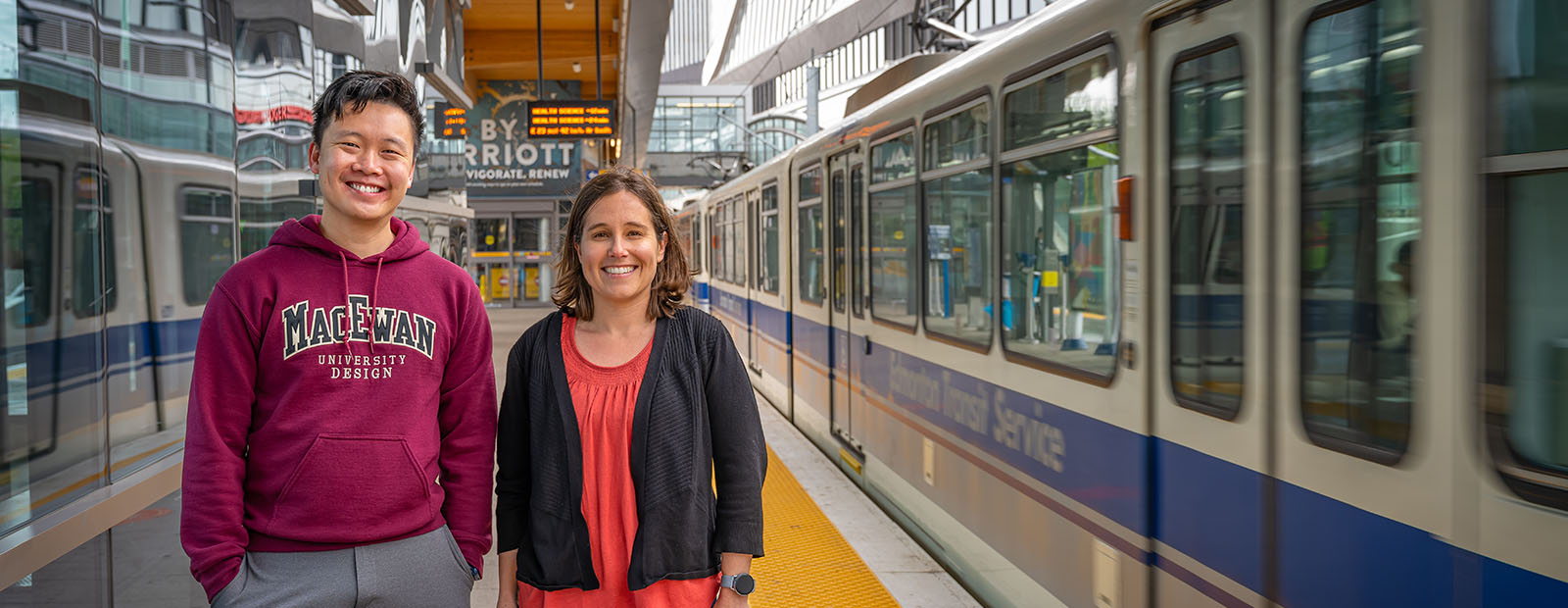Students in Dr. Isabelle Sperano’s DESN 445: Interaction Design III class spent a semester looking deeply into safety and security in the city’s transit system. They learned about work already underway by Edmonton Transit Service (ETS), talked to riders, developed an understanding of the issues and set out to find digital solutions.
Their focus? User experience – how people, in this case, transit users, interact with different parts of a system.
“Design is a problem-solving discipline,” says Dr. Sperano, an assistant professor in the Bachelor of Design program. “With Digital Experience Design (DXD), we are interested in designing in a way that allows people to easily use whatever the end product might be – anything from website and gaming interfaces to social media campaigns and printed materials.”
Digital experience design begins with understanding the context, the users and the issues before identifying a solution, explains Dr. Sperano, so early in the term she invited ETS’s Sarah Feldman, director of Business Integration and Workforce Development and Ryan Birch, director of Bus Operations, to introduce students to the issues the organization was facing and what they were hoping to achieve.
“Many people in the ETS team and other parts of the City of Edmonton are working tirelessly to improve transit safety,” says Feldman. “This class was an opportunity to get an outside perspective, dive into the topic and push us a bit outside our comfort zone.”
Getting a true appreciation of how people in the seats of buses and trains were feeling was the class’s first focus. They set out to see users’ perceptions of safety, dividing the research tasks among the class members – conducting rider surveys, looking at comments on social media, and even tapping into their own experiences as transit consumers.
After pooling their findings, each student created an ecosystem map – a visual representation of the entire ETS organization and its services with the goal of identifying relationships, issues, gaps and challenges. While several students shared their maps as part of the university’s Student Research Day in April (read more in the Student Research Day 2022 Book of Abstracts and Artist Statements), the class selected a single map to present to ETS.

“This really was a two-way conversation between the city and our students,” says Dr. Sperano. “We were connected throughout the semester, and students used feedback from ETS to create their safety promotion projects.”
Those projects included everything from printed materials to a non-emergency reporting app. Students Dominic Lafrance and Vik Chu teamed up to design an ETS-focused rider companion app (watch the video scenario that shows how the app could be used).
“Our concept wasn’t new, but rider companion apps are difficult to do right,” explains Chu. “Any interaction requires energy on the user's part, and if it’s too complex, they won’t want to use it. Every time we thought we had a great idea and pitched it to the class for feedback, they would ask, ‘Why would I do that?’ It was a very humbling experience.”
But an incredibly valuable one too, he adds. “It felt like we had to step up our game. There was a tangible, direct connection to a community partner – essentially a real client – who was helpful and enthusiastic about seeing what we had to share.”
While the ETS management team is interested in every one of the projects, one of the low-tech solutions is being implemented right away.
“All of the students’ proposals were very practical and feasible,” says Feldman. “This summer, we are implementing the first project by installing info boards in our stations that explain the various safety features and reporting tools. Some of the other ideas require developing new technology solutions and will take longer to explore.”
This successful project is part of a much larger initiative Dr. Sperano, her colleague Robert Andruchow and their student research assistant are working on in collaboration with the City of Edmonton. Together, the MacEwan professors are looking at digital experience design and digital service delivery across all of the City’s services, including websites, apps, platforms, social media and even non-digital tools.
“It’s a very complex project with a wide scope and is still in its early stages, but it’s incredibly important as our world becomes increasingly inundated with digital technologies,” says Andruchow. “Throughout the project, we will continue to discuss potential opportunities and look for ways in which they can fit within our teaching and research.”
The two Bachelor of Design profs talk about a video game that predicted COVID-19, how acting techniques can build a better digital experience and how research and teaching intertwine.
